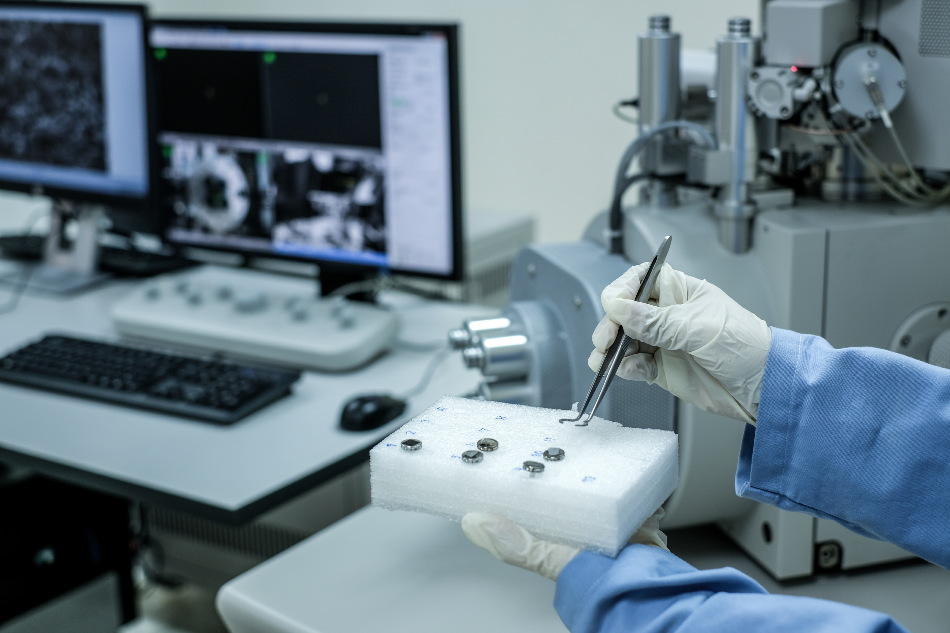Article updated on 11 March 2021
Non-destructive testing (NDT) is the name given to the family of techniques that can investigate materials or components without damaging them or impairing their function.

Image Credit: Anucha Cheechang/Shutterstock.com
The main applications of NDT methods are within safety and reliability measures. Commonly tested items included aircraft, automotive vehicles, bridges, buildings, pipelines, and refineries. All of which require regular checks to ensure their structure is not compromised.
Commonly used methods of NDT include, but are not limited to, acoustic emission testing (AE), electromagnetic testing (ET) (such as eddy current testing), ground-penetrating radar (GPR), laser testing methods (LM), leak testing (LT), magnetic flux leakage (MFL), microwave testing, liquid penetrant testing (PT), magnetic particle testing (MT), neutron radiographic testing (NR), radiographic testing (RT), thermal/infrared testing (IRT), and ultrasonic testing (UT).
The emergence of developing new materials that are built from nanostructures is pushing the need for NDT methods that can reliably test these substances. There has been a particular rise in the use of thin-film elements, driven by advancements in technology used in micro and optoelectronics.
Scientists and engineers need to gain information on the structural state as well as the topology of these nanocrystalline materials to develop efficient, reliable, and safe products. Also, knowledge of these factors is essential to advancing our knowledge of the regularities of the formation of nanostructures.
Therefore, NDT testing of nanostructures has become commonplace not only in product development but in experimental studies that seek to further our understanding of nanomaterials.
NDT with subminiature eddy current transducers
Eddy current testing has emerged as a leading NDT method for investigating nanostructural materials. Back in 2017, a team of scientists from various institutions in Russia developed a method for testing nanomaterials using a transformer-type eddy-current transducer.
Subminiature eddy-current transducers allow for more enhanced localization of the magnetic field than is possible with similar methods, allowing for the study of nanostructures.
To develop their method, the researchers connected a subminiature eddy-current transducer (ECT) to the soundboard of a computer that can both alter voltage in the transformer's exciting winding as well as read the voltage in the measuring winding.
These windings were converted into corresponding measures of electrical conductivity. The team then minimized the impact of the exciting winding on the final signal by introducing a compensation winding.
Next, the team completed the setup of the eddy-current transducer with its transformer with measuring, exciting, and compensation windings, a magnetic circuit was also included on the inside cylindrical platform with winding tracks windings cut on the external side.
Finally, the disintegration of the windings was avoided by impregnating it with compound 6 at 200°C, before the ferrite screen was added to enable the localization of the electromagnetic field on the sample material.
The resultant device was tested, and the team proved its effectiveness for measuring the electrical conductivity of the nanostructures, which gives insights into their properties. The team succeeded in establishing a non-destructive testing method to determine the thickness, oxidative stability, and electrical conductivity of the nanofilms they tested.
The method developed by the researchers based in Russia has the potential to be used to test other nanostructural materials, offering a reliable technique of non-destructive testing for the growing array of nanomaterials that are being devised for applications across several industries.
The establishment of this testing method will likely facilitate the development of new, more precise nanomaterials, designed to meet specific requirements. As well as in helping to ensure that products meet the functional requirements for their intended purpose.
Sources:
https://iopscience.iop.org/article/10.1088/1757-899X/177/1/012111
https://www.worldspec.org/
Disclaimer: The views expressed here are those of the author expressed in their private capacity and do not necessarily represent the views of AZoM.com Limited T/A AZoNetwork the owner and operator of this website. This disclaimer forms part of the Terms and conditions of use of this website.